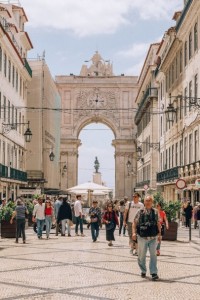 Even the most staunch climate change denier can’t ignore that heatwaves have been happening more frequently. In fact, the first week of this month became the hottest on record. There have been massive problems all around the world because of the heat, including fires, evacuations, and even deaths. The risk is higher in cities, so it is vital to look at how they can adapt. It may require changes in residential and commercial architecture, public spaces, and more.
Even the most staunch climate change denier can’t ignore that heatwaves have been happening more frequently. In fact, the first week of this month became the hottest on record. There have been massive problems all around the world because of the heat, including fires, evacuations, and even deaths. The risk is higher in cities, so it is vital to look at how they can adapt. It may require changes in residential and commercial architecture, public spaces, and more.
Because of their nature, it is always hotter in built up urban areas. It happens due to the creation of an urban heat island. An abundance of materials like concrete that retain a lot of heat mean it can be several degrees warmer in these locations. The density, a lack of greenery, and lack of access to cooling all make the situation much worse.
Greenery
One of the best ways to address urban heat is to invest in more green infrastructure. This could be parks, gardens, or even integrating plants into more streets and buildings. The greenery provides better natural cooling thanks to evapotranspiration. It also creates more shady areas for people. So, if cities want to provide more thermal comfort, investing in green is wise.
Reflect the heat
As we said above, the main issue is that cities use a great deal of materials that absorb heat. Reversing this is a very good idea. Instead of retention, the goal should be to reflect it back. Something as simple as white paint or a reflective coating can do a huge amount of good. You can do this for commercial architecture, homes, or even pavements and roads.
Passive cooling
Air conditioning systems are a godsend for buildings when it is too hot. Even a simple fan can make a big difference. However, these solutions can actually produce a lot more heat as well as being very energy intensive. It can actually make it even hotter in cities. A better option would be to look at passive cooling instead. Here heat can dissipate more naturally and you can make properties cooler with better ventilation.
Climate shelters
Even when a city is in the throes of a heatwave, people still have to go about their day to day lives. But, the temperatures can make it dangerous to spend too long out in the open. So, it can be wise to invest in climate shelters. These are cooler spots where people can spend some time out of the heat. A number of cities have invested in them, including Barcelona and Paris.
Use water
One of the best ways to improve temperatures is to have more water in the area. This could be ponds, fountains, or even misters. They can reduce the ambient temperature and help people to cool off. In addition, they can become fantastic features for the urban areas and properties.
Do you need some help with commercial architecture?
At Coffey Architects we have spent a lot of time looking at how to make buildings more comfortable for people. Addressing the temperature is vital here, especially in the UK because we don’t expect the highs we have been getting in the last few years. In fact, Britain is built largely with temperate conditions in mind. So, we are not prepared for heatwaves.
As you’ve seen above, there are a number of things that can help to cool cities. You can apply each of them to commercial architecture in one way or another. We would love to help with that, so contact us for advice.